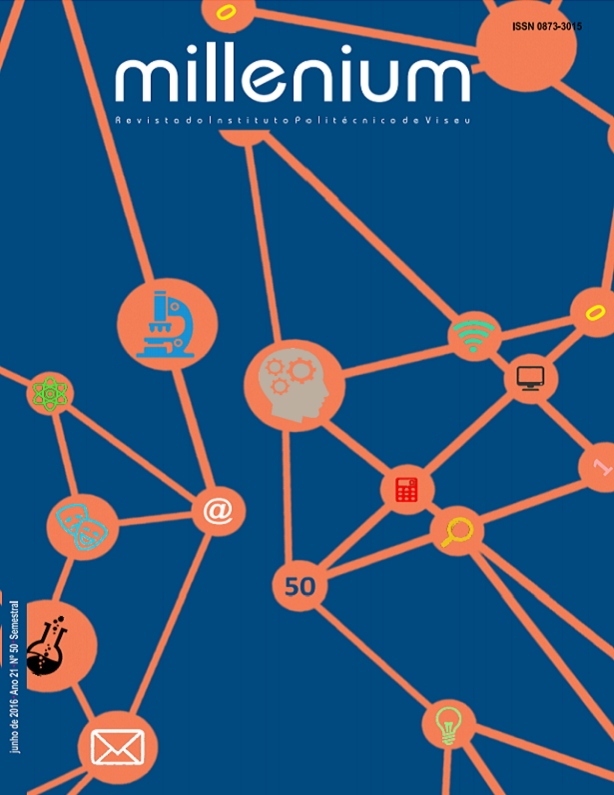Proficiência e Assimetria Manual de Jovens com Trissomia 21, em duas Tarefas de Destreza Manual.
Palavras-chave:
trissomia 21, destreza motora, lateralidade funcionalResumo
Objectivo: Avaliar a proficiência e assimetria manual de indivíduos com Trissomia 21 (T21) em dois testes de destreza manual: global e fina.
Métodos: Participaram 21 indivíduos com T21 entre os 17 e os 45 anos, sendo 13 destros, residentes na cidade do Porto, Portugal. Para a avaliação da Destreza Manual Global (DMG) utilizou-se o Minnesota Manual Dexterity Test (versão de colocação) e para a Destreza Manual Fina (DMF), o PurduePegboard.
Resultados: No teste de DMF não se verificaram diferenças estatisticamente significativas (t(20)=1.23, p=0.233) entre as mãos; porém, no teste de DMG a diferença entre as mãos alcançou significado estatístico (t(20)=3.128, p=0,005), sendo a mão não preferida (145.22±53.42 seg.) mais rápida do que a mão preferida (156.16±59.99 seg.). O Índice de Assimetria Manual para cada uma das tarefas foi calculado, porém, não revelou significado estatístico (t(20)=-1.003, p=0.328). Conclusão: A melhor proficiência com a mão não preferida na tarefa de DMG pode estar relacionada com características peculiares para esta população, como as dificuldades na motricidade seletiva, o que empobreceria o desempenho para ambas as mãos, ou ainda com outros fatores a serem investigados. Os dados sugerem que tarefas de DMF e DMG desempenhadas por pessoas com T21 não são influenciadas pela preferência manual.
Downloads
Referências
• Associação Médica Mundial - AMM/WMA (2000). Declaração de Helsínquia. Disponível em: <https://www.ufca.edu.br/portal/documentos-online/874--660>. Consultada em 15 de janeiro de 2016.
• Batheja, M. & McManus, I. C. (1985). Handedness in the Mentally Handicapped. Developmental Medicine &Child Neurology, 27, 63-68.
• Bryden, M. P., Sing, M., Steenhuis, R. E. & Clarkson, K. L. (1994). A Behavioral Measure of Hand Preference as Opposed to Hand Skill. Neurophysichologia, 3(8), 991-994. doi: 10.1016/0028-3932(94)90048-5
• Elliott, D., Weeks, D. J. & Chua, R. (1994). Anomalous Cerebral Lateralization and Down Syndrome. Brain and Cognition, 26, 191-195. doi: 10.1006/brcg.1994.1050
• Esteves, A. C., Reis, D. C., Caldeira, R. M., Leite, R. M., Moro, A. R. P. & Júnior, N. G. B. (2005). Força de preensão, lateralidade, sexo e características antropométricas da mão de crianças em idade escolar. Revista Brasileira de Cineantropometria e Desempenho Humano, 7(2), 69-75.
• Gérard-Desplanches, A., Derulle, C., Stefanini, S., Ayoun, C., Volterra, V., Vicari, S., Fish, G. & Carlier, M. (2006). Laterality in Persons with Intellectual Disability II. Hand, Foot, Ear, and, Eye in Persons with Trissomy 21 and Williams-Beuren Syndrome. Developmental Psychobiology, 48(6), 482-491. doi: 10.1002/dev.20163
• Groen, M. A., Yasin, I., Laws, G., Barry, J. G. & Bishop, D. V. M. (2008). Weak Hand Preference in Children with Down Syndrome Is Associated with Language Deficits. Developmental Psychobiology, 50(3), 242-250. doi: 10.1002/dev.20291
• Guimarães, R., Blascovi-Assis, S. M. & Macedo, E. C. (2012). Efeito da dominância lateral no desempenho da destreza manual em pessoas com síndrome de Down. Acta Fisiátrica,19(1), 6-10. doi: 10.5935/0104-7795.20120002
• Lafayette Instrument (1998). The Minnesota Dextery Test: Examiner`s Manual. Model 32023. Test Administrator’s Manual Revised Edition.
• Lafayette Instrument (2002). Purdue Pegboard Test: User Instructions. Model 32020.
• Mathiowetz, V., Volland, G., Kashman, N. & Weber, K. (1985). Adult norms for the Box and Block Test of manual dexterity. American Journal Occupacional Therapy, 39(6), 386-91. doi: 10.5014/ajot.39.6.386 • • Mulvey, G. M., Ringenbach, S. D. R. & Jung, M. L. (2011). Reversal of handedness effects on bimanual coordination in adults with Down syndrome. Journal of Intellectual Disability Research, 55(10), 998-1001. doi: 10.1111/j.1365-2788.2011.01457.x
• Rodrigues, P., Lima, E., Vasconcelos, M. O., Barreiros, M. O. & Botelho, M. (2011). Efeito da velocidade do estímulo no desempenho de uma tarefa de antecipação-coincidência em destros e canhotos. Revisa Brasileira de Educação Física e Esporte, 25(3), 487-496. doi: http://dx.doi.org/10.1590/S1807-55092011000300012
• Teixeira, L. A. & Paroli, R. (2000). Assimetrias Laterais em Ações Motoras: Preferência versus Desempenho. Motriz, 6(1), 1-8.
• Van Strien, J. W. (1992). Classificative van links-enrechts-hangige proefperrsonen. Nederlands Tijdschrifvoor de Psychologie, 47, 88-92.
Downloads
Publicado
Como Citar
Edição
Secção
Licença
Os autores que submetem propostas para esta revista concordam com os seguintes termos:
a) Os artigos são publicados segundo a licença Licença Creative Commons (CC BY 4.0), conformando regime open-access, sem qualquer custo para o autor ou para o leitor;
b) Os autores conservam os direitos de autor e concedem à revista o direito de primeira publicação, permitindo-se a partilha livre do trabalho, desde que seja corretamente atribuída a autoria e publicação inicial nesta revista.
c) Os autores têm autorização para assumir contratos adicionais separadamente, para distribuição não-exclusiva da versão do trabalho publicada nesta revista (ex.: publicar em repositório institucional ou como capítulo de livro), com reconhecimento de autoria e publicação inicial nesta revista.
d) Os autores têm permissão e são estimulados a publicar e distribuir o seu trabalho online (ex.: em repositórios institucionais ou na sua página pessoal) já que isso pode gerar alterações produtivas, bem como aumentar o impacto e a citação do trabalho publica
Documentos necessários à submissão
Template do artigo (formato editável)





